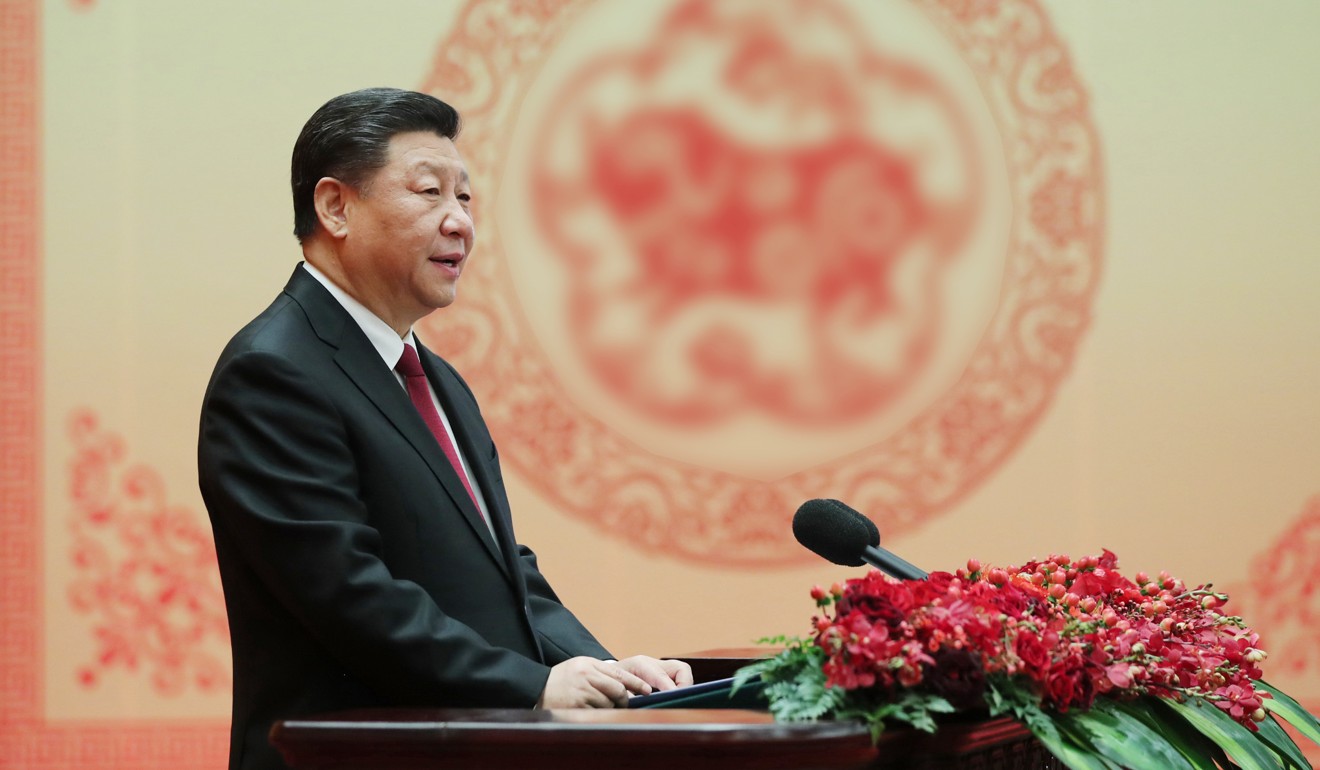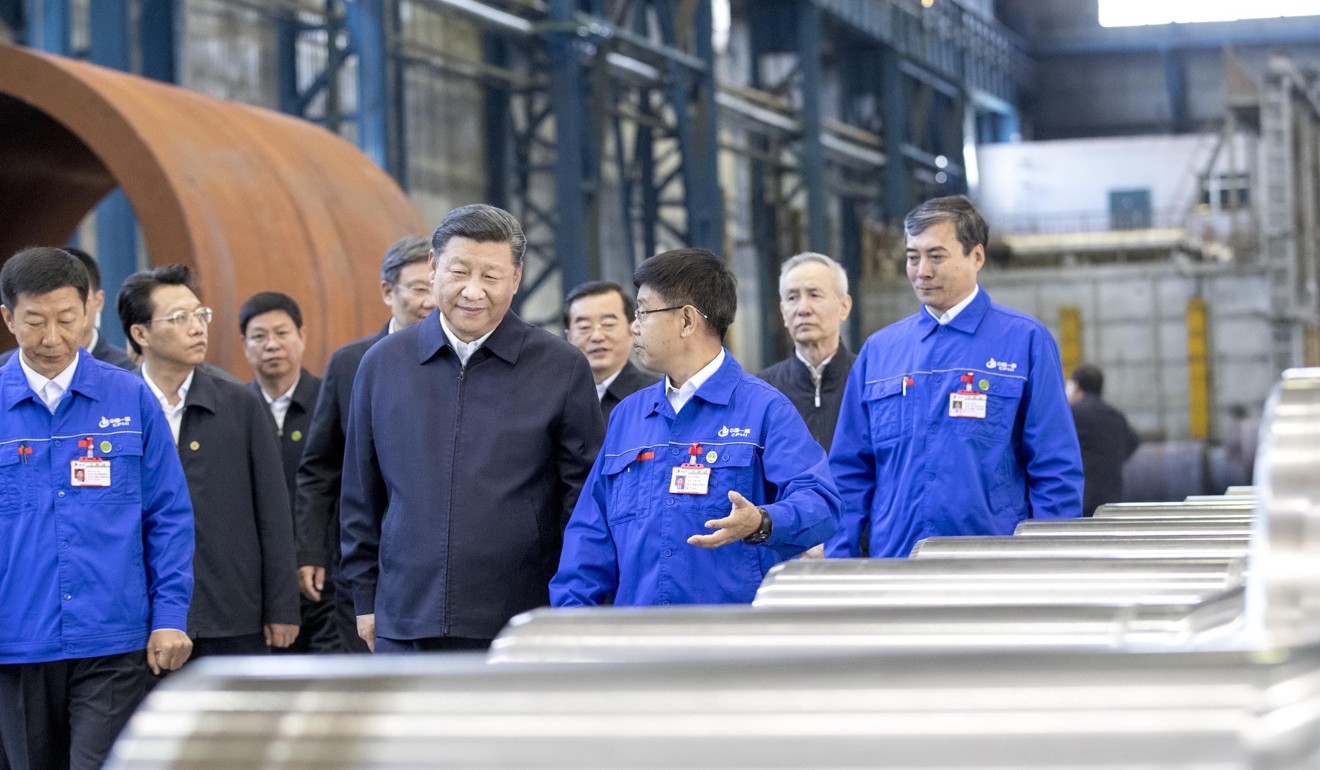China puts economy at risk by spurning market-oriented reforms it once promoted, long-time observer Nicholas Lardy warns
- The private sector has been sidelined despite Beijing’s 2013 decision to allow market forces to play a decisive role in the economy, Lardy says
- ‘The resumption of state-led growth … and an increasingly omnipresent party are contributing to China’s growth slowdown,’ US economist writes in new book

China’s move away from market-oriented reforms has undermined the country’s economy, and Beijing’s leaders must reverse course soon to prevent a tailspin, a prominent US economist has warned.
The resurgence of China’s state sector followed a series of supportive measures to make them bigger and stronger, which sidelined the private sector, said Nicholas Lardy, a senior fellow at the Peterson Institute for International Economics who has written about the Chinese economy and financial sector for four decades.
In his latest book – The State Strikes Back: The End of Economic Reform in China? – Lardy also suggested that Chinese officials address the long-standing grievances of its trading partners on industrial policies and state subsidies.
In a key Communist Party document in late 2013, Chinese leaders vowed to allow market forces to play a decisive role in resource allocation, but the reality was a shrinking private economy sector and an expanded role for state enterprises whose managers “appear to be asset maximisers, borrowing ever larger amounts to expand their business even if the returns do not cover the cost of capital”, Lardy said.
The share of bank lending to state firms more than doubled from 2013 to 2016, while private firms had been squeezed out, he said. But the productivity, in terms of return on assets, of state players was steadily lower than private-sector rivals.
“The resumption of state-led growth, in which a growing share of resources is flowing into investment by relatively low-productivity state firms, and an increasingly omnipresent party are contributing to China’s growth slowdown,” Lardy said in his book.
“The fast growth of investment by more productive private firms before, which was boosting China’s growth, has now moderated due to a combination of political factors and ‘crowding out’, inevitably slowing China’s growth.”
China has moved further away from the double-digit growth it was experiencing, including a high of 10.6 per cent in 2010. Its economy grew 6.6 per cent last year, the lowest increase since 1990.
“Whether this change is transitory or persistent will depend on policy,” Lardy said.
His sentiments were echoed by Chinese government advisers who are pessimistic about the economic outlook, particularly when Beijing is facing a growing blockade of its tech investment in the global market and louder criticism of its strong hand in hampering market competition.

The advisers shared the view that the reforms in recent years intended to reduce the debt load of state firms or make them competitive and efficient had yet to revitalise growth.
China reintroduced a debt-for-equity swap plan to reduce the debt loads, ordered the shutdown of zombie companies and began a mixed-ownership programme that allows private businesses to take equity stakes in state firms and encourages the merger of state enterprises.
“The fundamental obstacles to implementing far-reaching economic reforms in China is the top leadership’s view that, while state-owned firms may be a drag on China’s economic growth, they are essential to maintaining the position and control of the Community Party and achieving the party’s strategic objects,” Lardy said.
Beijing’s fear of financial and social instability and the opposition of vested interest groups – including top management of large state firms, some government bureaucrats and many local political officials – were also obstacles for market-oriented reform, he said.
Lardy said the number of underperforming state companies that went bankrupt was “tiny” because of widespread resistance at the local level and the “state-orchestrated” mergers had, in reality, reduced competition and created new monopolies.
He said local governments relied on tax income from companies, even zombie companies – which have long-term losses but still keep operating – to finance social services and local infrastructure.
A return to market reforms should include lowering barriers for more productive private firms; encouraging bottom-up mergers and acquisitions to let private companies to take over underperforming state firms; and taking forceful measures to retire zombie firms, mostly state-owned, he said.

Lardy estimated that the deteriorating productivity of state-owned enterprises and the decrease in private investment reduced China’s growth by an estimated 1.6 to 2.0 percentage points annually.
“More than two-fifths of state firms persistently lose money,” he noted in the book, adding that China’s official data understates the losses of poorly performing state firms and non-performing loans, while overstating the profits of the successful state firms.
These losses have been exacerbated since the party moved to solidify its control over all aspects of the economy. Government advisers, who spoke with the South China Morning Post on condition of anonymity, said that top leaders, by sending conflicting messages, had yet to find a solution for reforming state-owned enterprises.
The reversion to party control has all but buried China’s stated convictions from November 2013, during the Third Plenum of the 18th party congress, when the party announced a sweeping reform agenda allowing market forces to play a decisive role in the economy.
The reforms have also fallen short of a 2012 joint report by the World Bank and the Development Research Centre of China’s State Council titled “China 2030”.
“It is imperative that China … develop a market-based system with sound foundations in which public resources finance the delivery of key public goods and services – while a vigorous private sector plays the more important role of driving growth,” the report said.
“China’s strategy toward the world will need to be governed by a few key principles,” the report said: “open markets, fairness and equity, mutually beneficial cooperation, global inclusiveness and sustainable development.”
In the face of growing external discontent over China’s market barriers and hefty state support of industrial policies, China has stepped up measures to level the playing field. Examples include allowing the gradual opening of some market access and revising foreign investment law to improve intellectual property protection.
But the details can be complicated, such as how to ensure policy transparency and law enforcement. And talks to end the trade war with the United States could slow the pace as President Xi Jinping did not want to appear to be caving in to US pressure, the government advisers said.
“China’s last big push on reform of state-owned enterprises came under the leadership of premier Zhu Rongji, who led both a major downsizing and restructuring of state companies starting in 1997-98 and a significant opening of the economy to external competition, paving the way for China’s entry into the World Trade Organisation in 2001,” Lardy said in the book.
“Zhu Rongji’s reform created the foundation for almost 10 years of the most rapid growth China has ever had, from the early 2000s onward,” Lardy said in an interview.
Looking ahead to the next two years, “the biggest risk for China is that this weak state sector will continue to drag down China’s growth”, he said. “Because it is the underlying problem, and it creates other risks.”
He said Beijing should return to market-oriented reforms, including eliminating subsidies to state firms and modifying industrial policies to treat both domestic and foreign firms equally.
Estimates of the scale of China’s state subsidies differ. Lardy’s assessment is that direct subsidies to state non-financial firms stood at 543 billion yuan (US$80 billion) in 2015, one-fifth of their reported profits.
A working paper by the International Monetary Fund estimated that subsidies for medium and large state industrial firms in 2015 were about 3 per cent of GDP, or 1.8 trillion yuan (US$266 billion).

“Without such reforms, major trading partners are likely to restrict China’s access to their markets and limit its ability to acquire advanced technology through acquisition of their firms,” Lardy said in his book.
“China cannot credibly advocate for further globalisation, which depends on free and open markets, when its domestic policies continue to move in the opposite direction.”
But he also said optimism remained and the potential was still there if Chinese decision makers returned to market-oriented reforms.
“Expanded reform would likely boost China’s growth from the recent range of 6 to 7 per cent to an average of 8 per cent or possibly slightly more,” he said.